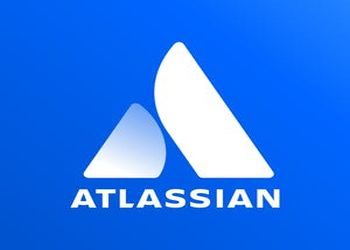Both the burndown and burnup charts are considered to be the two types of charts that are used widely by project managers in the field of data. Project managers use these charts to track and communicate the current progress of all their projects. Now both these Burndown vs Burnup chart types are used in different ways, have different purposes but in the end, both are related to work. A burndown chart is used to analyze how much work is left to be done in the project. Whereas, a burnup chart shows the amount of work that has been completed and the total amount of work. Thus both burndown vs burnup is related to measuring work, so let us make a comparison between the two to find out some differences between them. You might also be interested to know about Agile and DevOps (as these are related concepts).
Comparison between burndown vs burnup charts:
The following table shows some clear differences between the burndown vs burnup two:
Burndown chart |
Burnup chart |
| The Burndown chart is quite simple. Meaning, it is a single line that is racing towards zero as the project is completed. | Whereas, a burnup chart is frequently used to track all the completed and the total work. Now it has two separate lines where one represents the completed work and the other one represents the total work. |
| As the chart is quite simple thus anyone is able to understand it easily and no technical explanation is required. But one drawback here is that too much simplicity hides important information about the progress of the project which can cause problems for the project managers. | This chart is a little difficult to understand as it depicts two different lines. The work line throws off important information like is the project completed or not. Has new work been added or not or more. As different information is present on this chart therefore it can be crucial in diagnosing and rectifying problems with a project. |
| If a project is to have a fixed scope, then it is better to use burndown charts to avoid making things complicated. It is because in a fixed scope, a burn-up chart provides no more information than a burndown so why not use the simple one is this state. | Similarly, if you wish to present progress every time to the same audience regularly, then you’re better off with a burn up chart. It is because this chart will allow you to show your audience the progress you’re making. And adding more work wouldn’t cause any problems. |
| Burndown charts are not good with scope change as they hide information that is too important to be missed. | Whereas, burnup charts are more recommended with scope creep as it makes the problem easily visible to the customer. |
| The goal of burndown chart is communication but is only recommended when things are simple. As soon as the client starts to add extra features, or requests, it is difficult for the burndown chart to measure the progress efficiently. | Similarly, the goal of burnup chart is also communication and it clearly shows the completed work and project scope even when things are complicated. In other words, when the stakeholders or clients ask to add extra features, then it is better to use burnup chart to effectively communicate with the clients and show them the true picture. |
| As burndown charts are simple, it is difficult to use it as a source to find out whether the stakeholders needs that extra whistle or not. | But with the help of a burnup chart, the stakeholders are able to figure out whether they need the extra bell/whistle or not by clearly looking at all aspects and the progress of the work. |
| Burndown charts being simple makes them really easy to interpret and understand the whole situation of the project. Check out our comparison post about RUP vs Agile too. | On the other hand, the burnup charts are a little complex and that is why are difficult to interpret and require the same short explanation to be there for all those who are not familiar with them. Though little effort has to be made to give out that explanation, but it is usually worth the time. |
| Burndown charts can be created manually using pen and paper with quite ease. With that, they can also be created by entering data into the spreadsheet program, like excel. | Whereas, burnup charts can be created using many tools. These tools include a simple pen and paper just like in a burndown chart. With that, it can also be created using spreadsheet program like excel. |
Some other Courses for Scrum Certifications
Take this course is an online platform where you can appear for CSM Practice Test and PSM Certification Dumps to validate your skills.
 Scrum Master Prep + Scrum Master + Agile Scrum Training
Scrum Master Prep + Scrum Master + Agile Scrum Training
- Paul Ashun via Udemy
- 184,348+ already enrolled!
- ★★★★☆ (23,026 Ratings)
 Agile with Atlassian Jira
Agile with Atlassian Jira
- Atlassian via Coursera
- Learn for FREE, Up-gradable
- 75,943+ already enrolled!
- ★★★★★ (3,344 Ratings)
 Agile Meets Design Thinking
Agile Meets Design Thinking
- University of Virginia via Coursera
- Learn for FREE, Up-gradable
- 120,561+ already enrolled!
- ★★★★★ (2,613 ratings)
Conclusion:
This was a small comparison between burndown vs burnup that we were able to make between the burndown and burnup chart. So it would be better to read this topic more than once to understand it better. As project managers use these charts to track and communicate the current progress of all their projects. But one simple thing that you can keep in mind is that burndown chart is simple ones and present information with a single line. Whereas burnup charts are a little complex having two lines being used to represent information regarding a project. So, understand properly what these two burndown vs burnup charts are used for and never stop learning.



